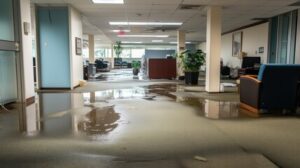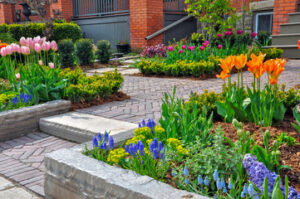Montana Solar Incentives are changing the way energy is produced and consumed. These initiatives are no longer limited to traditional tax benefits. New frameworks now offer layered support based on energy output and storage integration. This shift empowers homeowners and businesses to think beyond rooftop panels.

Some incentive programs now reward participation in solar communities. Shared solar farms provide access to renewable energy without physical installation. Consumers subscribe to energy shares and receive credits on their bills. This model expands accessibility and promotes energy equity.
Time-based solar incentives are also on the rise. These reward systems adjust depending on peak and off-peak energy contribution. When users feed electricity back during high-demand hours, they receive higher compensation. It encourages smarter energy distribution in real-time.
Performance-linked incentives have become more refined with digital monitoring. Systems are evaluated on actual energy efficiency rather than estimated output. This approach promotes quality installation and maintenance. It fosters long-term energy reliability and reduced waste.
New solar incentives now consider the combination of solar with battery systems. Installations that include storage receive bonus benefits due to increased grid resilience. Stored energy reduces dependence on the grid during outages. It also smoothens electricity demand throughout the day.
Some regions are piloting incentive structures based on neighborhood performance. The more solar users within a community, the higher the rewards for all. It encourages collective action and builds energy-conscious neighborhoods. Social participation becomes a factor in renewable growth.
Microgrid participation is becoming a new basis for incentive qualification. Properties that integrate into local microgrids receive higher support. These systems enhance local grid independence and disaster preparedness. Incentives now aim to strengthen entire energy ecosystems.
A growing trend in solar incentive policy is focused on adaptive energy behavior. Users who alter consumption patterns to align with solar production are given extra credits. Behavioral shifts like daytime appliance use become financially beneficial. It transforms how people live and consume power.
Incentives are now linked to the recyclability of solar components. Installers who use recyclable or low-impact materials are favored. This closes the lifecycle loop of solar systems and aligns with sustainability goals. Waste reduction is becoming part of energy incentives.
Mobile solar units are also entering the incentive conversation. Portable systems that power construction sites or remote events are being recognized. Their temporary use reduces reliance on diesel generators. Incentives now cater to flexibility and off-grid functionality.
Emerging policies offer incentives for integrating solar into existing infrastructure. Systems built into windows, facades, and roofs receive higher support. This approach maximizes surface efficiency and aesthetic integration. Solar becomes part of architectural identity.
Peer-to-peer solar trading is transforming household incentives. Users can sell excess energy directly to neighbors using blockchain platforms. This creates localized energy markets with tailored pricing. Incentives now encourage prosumer roles in energy exchange.
Educational institutions receive unique solar incentives for student engagement. Schools implementing learning-based solar projects get extended benefits. This nurtures a generation of renewable energy advocates. Learning and sustainability grow together.
Solar incentive programs now integrate with electric mobility strategies. Households that charge electric vehicles with solar energy gain extra perks. It promotes the connection between clean generation and clean transport. Energy usage becomes more holistic and intentional.
Innovative credit systems are rewarding building-integrated photovoltaics. This includes solar tiles, canopies, and integrated skylights. The approach ensures energy generation without compromising design. New structures are built with sustainability at their core.
Decentralized solar incentive models are starting to replace blanket policies. Local energy needs and capacities determine specific rewards. This avoids overcompensation and aligns with grid conditions. Incentives become smarter and more responsive.
Virtual solar net metering is reshaping access to incentives. Tenants in shared buildings or renters can now benefit from solar generation. Virtual credits are distributed proportionally to contributors. It removes ownership barriers to solar participation.
Agricultural solar incentives are evolving for dual-use systems. Solar panels elevated over crops allow simultaneous food and energy production. Farmers receive incentives based on land efficiency and output balance. It protects food systems while growing clean energy.
Incentives tied to biodiversity outcomes are gaining traction. Solar installations that support pollinators or wildlife habitats earn additional rewards. Energy production is now seen as part of broader ecological health. Sustainability expands beyond carbon reduction.
Low-income solar programs are being redefined through tiered incentives. Households with limited means receive fully subsidized installations. Others pay on a sliding scale, promoting fair access. Equity is prioritized without sacrificing energy goals.
Dynamic pricing models are being incorporated into incentive structures. Users who opt into time-of-use pricing are rewarded for aligning demand. This helps stabilize the grid and reduce peak load pressure. Smart consumption is incentivized as much as generation.
Commercial properties with public solar visibility are being acknowledged. Buildings that educate the public or display solar production data gain extra points. These serve as live demonstrations of renewable energy. Public awareness becomes a valuable incentive component.
Incentives are expanding into combined renewable systems. Properties using both solar and wind receive hybrid system bonuses. These rewards reflect higher reliability and grid contribution. It pushes innovation in multi-source clean energy setups.
Data-sharing agreements are now part of some incentive requirements. Users allow anonymized system performance data for research and policy design. In return, they receive extra financial support. It creates a feedback loop between users and regulators.
Incentives are growing for solar retrofits in historic preservation. Carefully integrating solar into protected architecture is rewarded. This preserves cultural value while embracing modern energy. It shows that tradition and technology can coexist.
Short-term bonus incentives are being used to push quick adoption. Limited-time offers accelerate installation in lagging areas. Once goals are reached, the incentives are phased out. This approach manages demand while keeping momentum high.
Carbon offset credits from solar generation are becoming more valuable. Households can now trade these credits in open markets. The value increases based on regional carbon goals. Energy savings become a profitable long-term asset.
Smart appliances connected to solar systems are starting to qualify for bonuses. Devices that respond to solar output help reduce wastage. Their interaction with energy flow boosts overall efficiency. Integration becomes a metric for receiving higher benefits.
Incentives are targeting older buildings with poor energy ratings. Upgrading these with solar and insulation packages brings premium rewards. This transforms energy-inefficient properties into clean power hubs. It also reduces emissions in the least efficient sectors.
Systems with predictive maintenance features are given priority. AI tools that forecast faults or optimize performance boost reliability. These systems reduce downtime and maximize returns. Efficiency is recognized as a critical incentive trigger.
Floating solar systems are becoming eligible for specialized incentives. These are deployed on reservoirs or unused water bodies. They offer cooling benefits that improve panel performance. Incentives now consider environmental synergy in system placement.
Advanced metering infrastructure is now part of solar incentive criteria. Smart meters provide detailed usage data for precise reward calculations. It increases transparency and helps utilities manage loads better. Accurate data makes incentive programs fair and effective.
Some areas offer social impact-based solar incentives. Installations that serve schools, health centers, or disaster shelters receive added rewards. These prioritize solar where it can serve the most vulnerable. Energy becomes a tool for social resilience.
Dynamic dashboards are part of emerging solar engagement strategies. Real-time tracking tools help users monitor savings and contributions. Those who actively engage with their systems receive bonus credits. Education and interaction are built into the incentive model.
Building codes are being aligned with incentive programs. New constructions meeting solar-readiness criteria qualify early. This reduces the cost of future upgrades. Solar incentives now influence how buildings are planned from the start.
Solar cooperatives are forming to leverage group buying power. Participants pool resources for shared system installations. They receive bulk incentive rates and reduced costs. This model builds community and shared investment in renewables.
Weather-adaptive panels are now part of experimental incentive tiers. These adjust to maximize output in changing light conditions. Their responsiveness increases year-round efficiency. Cutting-edge innovation is rewarded at every level.
Incentives are being restructured to reflect lifecycle cost savings. Programs calculate benefits based on avoided utility bills over decades. This long-term view encourages investment over short-term gains. Stability becomes the new measure of success.
Decarbonization goals are influencing how solar incentives are prioritized. Incentives are allocated based on emissions offset potential. The cleaner the system, the better the reward. This ensures alignment with broader climate strategies.
The world of solar incentives is expanding into new creative directions. As energy demands evolve, so must the policies that guide innovation. These emerging structures are building an inclusive, flexible, and efficient solar future. Every incentive tells a story of progress and possibility.








